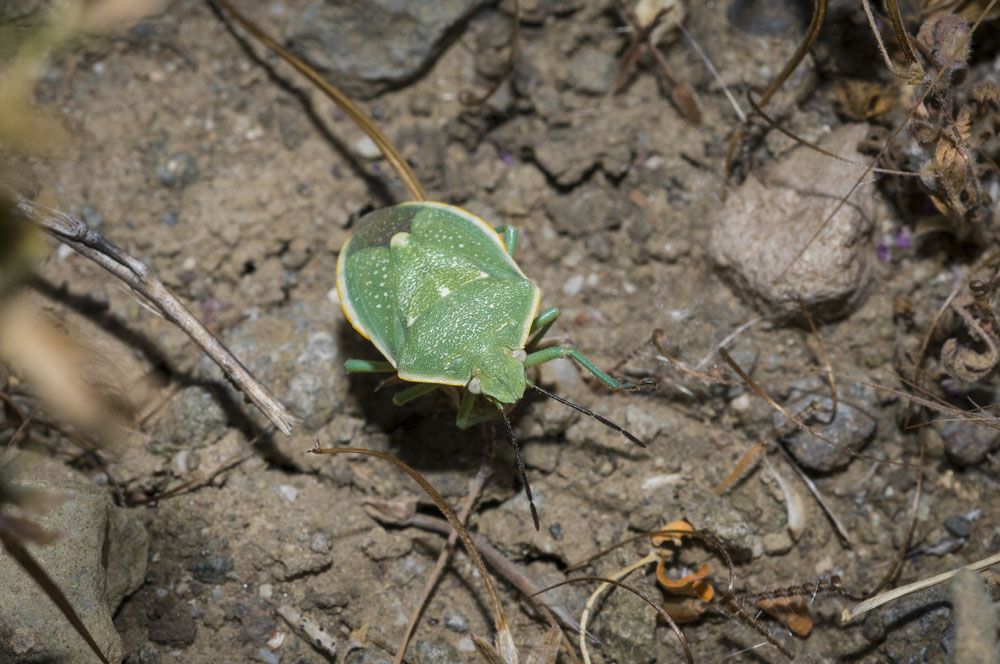
Green Stink Bug – Acrosternum hilare
Green Stink Bug: Appearance, Territory, Damage and Life Cycle
Latin Name: Acrosternum Hilare
Appearance: The green stink bug is a prevalent pest of seeds, grain, nuts, and fruit in both the nymph and adult stages across North America. This species is particularly polyphagous (it feeds on a variety of host plants). While the bugs are capable of long-distance excursions in search of food, they are most typically clumped near host plants during the optimal period of growth. Adult stink bugs have a large, flattened shield-shaped body with a small head. The green stink bug has a consistent grass-green coloration.
Hosts Plants: It is a significant pest because it has a diverse host range. Black cherry and elderberry, blooming dogwood, evergreen blackberry, basswood, and pine trees are some of its favored hosts. The species also affects a wide range of economically significant crops, including apple, apricot, asparagus, beans, cherries, maize, cotton, eggplant, peach, pear, peas, soybean, tobacco, and tomato.
Territory: The green stink bug, Acrosternum Hilare, is common in North America and a widespread pest throughout the country. It is one of several significant stink bug species that cause significant economic damage to agricultural goods.
Damage Insect Cause: Adult stink bugs cause damage to stone fruit because nymphs are unable to transfer to early producing fruit trees such as peaches or nectarines. Adult stink bugs will often deposit their eggs early in the season in grapes, and many little nymphs will begin to suck the juices from the growing fruit.
Large stink bug infestations can cause plants, particularly tiny plants and new fragile growth, to wilt, become stunted and deformed, or die. Yellow or white blotches on leaves; deformed or aborted fruits, seeds, and buds; calluses, warts, or depressions; and black pits on nuts are examples of further damage.
Life History and Habits: Mating happens when green stink bugs become active during the first warm days of spring. A few bugs may be present from May to June, but they become more abundant in mid to late June and then disappear on fruit trees in July and August, with just one generation every year. In July and August, a second generation is possible.
The life cycle usually lasts between 30 and 45 days. The usual growth time from egg to adult is around 35 days, however this varies depending on temperature. The green stink bug, like other Hemipterans, has an incomplete metamorphosis, which means that the juvenile resembles the adults. Undeveloped stages go through five instars, and each time a nymph molts, it appears more like an adult; this process takes roughly a month.
Green stink bug may be seen in soybean fields from mid-July till harvest. They are frequently most common along the border rows adjacent to weedy or forested regions.
